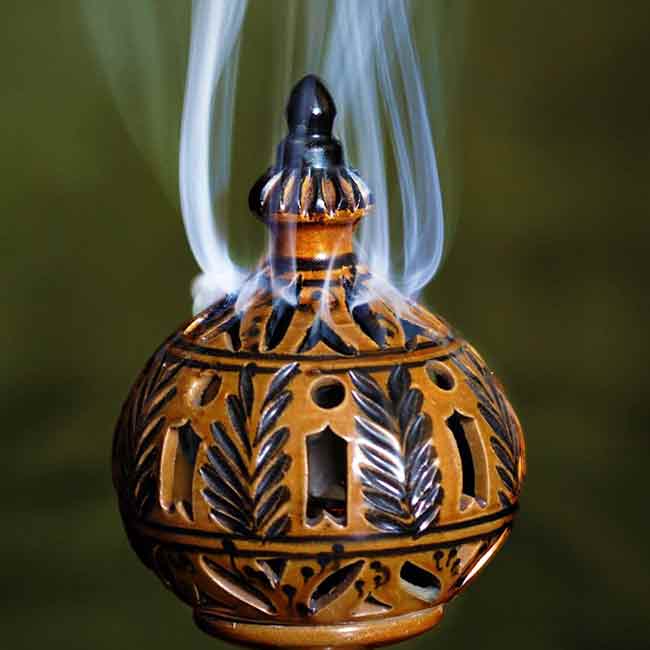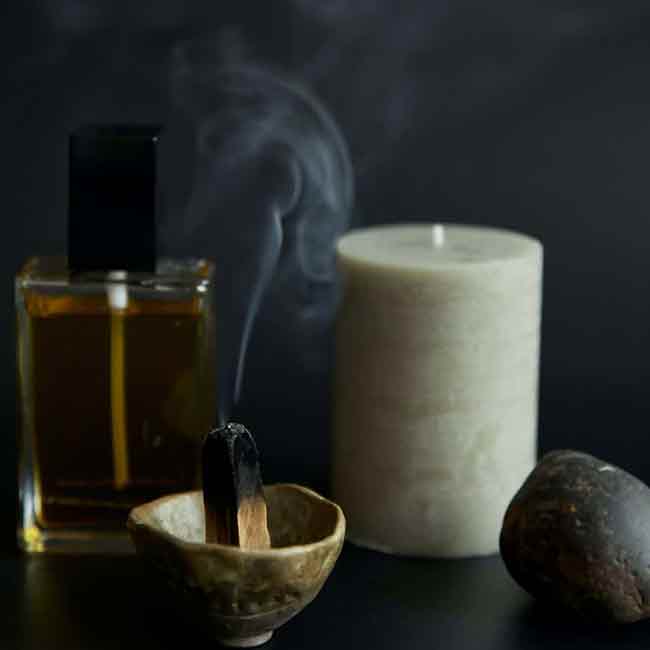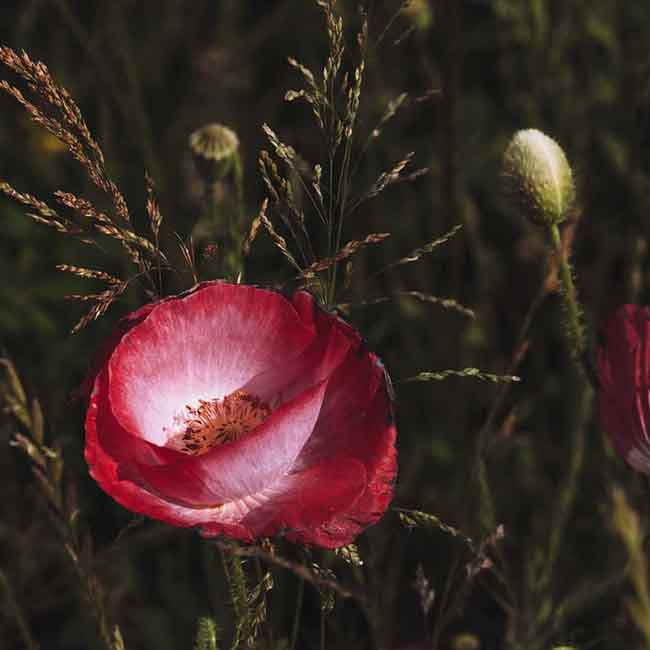The years 1990 marquent l’essor de la parfumerie moderne avec des créations toujours plus nombreuses. C’est dans cet engouement, initié par la Société Française des Parfumeurs (S.F.P), that the classification of olfactory families is born including one of the most popular:amber - oriental. A recent name for a rich and complex history dating back thousands of years.
L’Histoire du parfum est profondément liée aux rituels religieux, que cela passe par le Christianisme, le Bouddhisme ou encore l’Islam. Pendant l’Antiquité, nos ancêtres de Mésopotamie ( actuel Irak et nord-est de la Syrie) concoctaient diverses huiles essentielles. Réservées aux élites du à l’utilisation de matières premières coûteuses. Les Hommes les arboraient sur le corps durant les cérémonies religieuses. Il était également commun de faire brûler de la résine, ou du kyphi (encens) pour se connecter avec le Divin et plus tard chez les Egyptiens avec l’au-delà .


Profondément enracinées dans la culture et les traditions de l’Orient, les parfums ambrés – orientaux ont traversé le temps et les frontières. Ils ont commencé à servir pour diverses utilisations notamment, à des fins de séduction au sein de la noblesse orientale. Selon les enseignements de l’Islam, l’utilisation de parfums est recommandée et est considérée comme une pratique vertueuse. Les personnes ayant la Foi, ont adopté et adoptent encore l’utilisation de parfums dans leur vie quotidienne, que ce soit pour les prières, les célébrations ou simplement pour le bien être. Plus tard les parfums orientaux se sont développés en Occident et en Europe notamment via les voyages d’explorations ou les échanges commerciaux internationaux.
From the 17th century onwards in Franceroyalty and the nobility of Versailles delighted in the sweet scents of oriental perfumes.
The importance of appearances at court was such that oriental perfumes were greatly appreciated for their ability to create a strong olfactory impression and therefore memorable.
Their users could find the characteristic notes of amber - oriental perfumes, including: resinous woods, for the oldest, myrrh and incense. Woody notes, such as cedar or sandalwood, animalic materials or the leather family for ambergris or musks, as well as dried plants like saffron, jasmine or Damask rose.


One of the first French success stories amber-oriental fut « Tabac Blond » by the House of Caron. Launched in 1919, it was the first leather fragrance for women.
But also, the famous Habanita by Pierre Molinard (1921), where the innovative use of vetiver in its feminine juice was the subject of much debate. These deliberately unisex, innovative fragrances were a breath of fresh air.
In the 1990 visit amber - oriental ont continué d’inspirer les parfumeurs en associant les notes suaves de cette famille à des notes plus jeunes et séductrices dans la créations de parfums aux facettes fruitées, florales ou encore gourmandes présentes dans « Angel » by Thierry Mugler.
Actuellement , les ambrés – orientaux sont encore et toujours une famille olfactive majeure dans l’industrie de la parfumerie. De nombreuses entreprises bon marché aux Maisons de parfums renommées et internationales proposent des créations toujours plus inspirées par cette famille.
Mention également pour le parfumeur Kilian Hennessy aux multiples créations inspirés par l’Orient, dont « Rose Oud », « Incense Oud » ou encore la dernière création de cette rentrée 2023, « Smoking Hot » a smoky favourite with hints of liquorice from the fennel extracted in its juice.

Nous vous accueillons dans notre nouvel espace
Our new location is :
21, rue des Écouffes – Paris 04 – Métro Hôtel de Ville
Permanence téléphonique assurée au 01.40.29.90.84
2 Responses
Thank you for a very interesting read! Could you comment also about the ban of the word « oriental » in perfumery today? Do you think « ambery » is the correct term to subsitute it?
I can unsdertand the substitution od word, but it’s not only a matter of amber.
It’s also the discontination of the black musk too (civet cat, casto , ..), the limitation of the spices, etc..
i think that’s a global view of the perfumery world and history: oriental is not only middle east fragrance but the magic creation of the 70-80’s perfume style.
Work on the « made to measure » – Customized creation, it’s what we do, the topic is to renew these style trying to find some elegance with the full compliancy with the regulation, of course.
Patrice